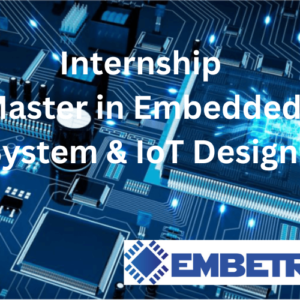- Introduction to Embedded System Design
- Choosing the Right Processor
- Introduction to Cortex M4 Architecture
- What is IDE & Installation
- How to Create a Simple Project
- Real time Debugging in STM32F411
- Blinking LED and Switch
- Memory Map and Bus Interface of Cortex Mx Processor
- Understanding Stack Memory
- Exception Model of ARM Cortex Mx Processors
- Understanding Startup File
- Understanding Linker Scripts
- Fault Handling and Analysis
- UART -PART 1
- UART -PART 2
- Interrupt Programming
- System Tick Timer
- Implementation of Task Scheduler
- ADC
- LCD
- PWM
- I2C -PART 1
- I2C -PART 2
- SPI -PART 1
- SPI -PART 2
- RTC
- DMA Driver Development
- Bluetooth Based Home Automation
- Weather Monitoring using STM32 and Google cloud
Every session / topic would be followed by programming tips viz:
- Common Programming Errors: Students learning a language – especially in their first programming course – tend to make certain kinds of errors frequently. Focusing on these Common Programming Errors helps students avoid making the same errors.
- Good Programming Practices: Good Programming Practices are tips for writing clear programs. These techniques help student produce programs that are more readable, self-documenting and easier to maintain.
- Performance Tips: In our experience, teaching students to write clear and understandable programs is the most important goal for a first programming course. But students want to write the programs that run the fastest, use of least memory, require smallest number of keystrokes,. Students really care about performance. They want to know what they can do to “turbo charge” their programs. So we highlight opportunities for improving program performance-making programs run faster or minimizing the amount of memory that they occupy.
- Portability Tips: Software development is a complex and expensive activity. Organizations that develop software must often produce versions customized to a variety of computers and operating systems. So there is a strong emphasis today on portability, i.e., on producing software that will run on a variety of computer systems with few, if any, changes. Achieving portability requires careful and cautious design. There are many pitfalls.
- Software Engineering Observations: The Software Engineering Observations highlight techniques, architectural issues and design issues, etc. that affect the architecture and construction of software systems, especially large-scale systems.
- Self-Review Exercises and Answers: This gives the student a chance to build confidence with the material and prepare to attempt the regular exercises.





Reviews
There are no reviews yet.